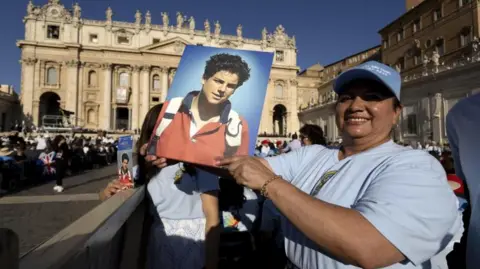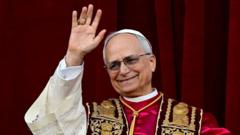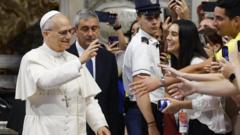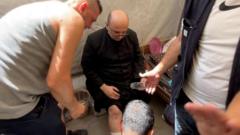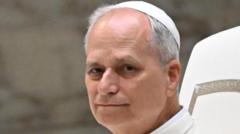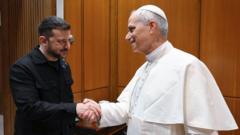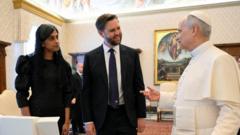Now that the white smoke has billowed from the Sistine Chapel, indicating that a new pope has been elected, an important sequence of events is set to occur before the world learns the identity of the new leader of the Roman Catholic Church. Reflecting on past elections, it is likely to take at least an hour before the chosen cardinal steps onto the balcony of St. Peter’s Basilica to declare, in the traditional Latin, “Annuntio vobis gaudium magnum: Habemus papam” — which translates to “I announce to you a great joy: We have a pope.”
In this conclave, Cardinal Dominique Mamberti of France is expected to make this announcement. Should he be elected as pope, the message will be conveyed by Cardinal Mario Zenari of Italy. Before this public declaration, activities within the Apostolic Palace will proceed swiftly, adhering to the guidelines established in a 1996 document issued by the Vatican.
The master of papal liturgical celebrations, Archbishop Diego Ravelli, will prepare a document affirming the elected cardinal’s acceptance of the role as the bishop of the Church of Rome, the true pope, and the head of the College of Bishops. If the newly elected cardinal is not already a bishop, he will receive immediate ordination.
Following this, the voting cardinals will approach the new pope in a formal act of homage and obedience. One notable aspect of the ritual includes a visit to the Room of Tears, a small chamber adjacent to the Sistine Chapel, where the new pontiff dons the white papal cassock for the first time. A set of garments in various sizes is maintained there, as the precise stature of the new pope is unknown until his election is confirmed. Shoes are also available in different sizes. The name "Room of Tears" has emerged from accounts of previous popes experiencing overwhelming emotions within its walls post-selection.
Once the new pope is robed in his papal vestments, he will appear on the balcony for the first public greeting, officially marking the commencement of his papacy and a new chapter for the Catholic Church.
In this conclave, Cardinal Dominique Mamberti of France is expected to make this announcement. Should he be elected as pope, the message will be conveyed by Cardinal Mario Zenari of Italy. Before this public declaration, activities within the Apostolic Palace will proceed swiftly, adhering to the guidelines established in a 1996 document issued by the Vatican.
The master of papal liturgical celebrations, Archbishop Diego Ravelli, will prepare a document affirming the elected cardinal’s acceptance of the role as the bishop of the Church of Rome, the true pope, and the head of the College of Bishops. If the newly elected cardinal is not already a bishop, he will receive immediate ordination.
Following this, the voting cardinals will approach the new pope in a formal act of homage and obedience. One notable aspect of the ritual includes a visit to the Room of Tears, a small chamber adjacent to the Sistine Chapel, where the new pontiff dons the white papal cassock for the first time. A set of garments in various sizes is maintained there, as the precise stature of the new pope is unknown until his election is confirmed. Shoes are also available in different sizes. The name "Room of Tears" has emerged from accounts of previous popes experiencing overwhelming emotions within its walls post-selection.
Once the new pope is robed in his papal vestments, he will appear on the balcony for the first public greeting, officially marking the commencement of his papacy and a new chapter for the Catholic Church.




